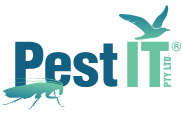FREE Gift will be Included in all Orders Over $200
Become a partnerDisinfectant for Birds
Pest birds pose a serious human health impact and as such a bird disinfectant is a key tool in dealing with droppings. In a workplace environment, this can be problematic to the health of staff and customers and have a seriously negative impact on the aesthetics of a building. These and many other risks can be averted through a bird mitigation strategy.
Cleaning and disinfecting the site is an essential part of pest bird eradication strategy. Droppings should be considered hazardous waste and must be dampened down and disinfected prior to any attempt at removal. The droppings must be treated with disinfectant that will deactivate the pathogens, help deodorise and clean the surface.
Pest Bird Diseases
Pest birds are a major vector or reservoir of zoonotic (animal to human transmission) diseases. Humans can become infected by a wide range of harmful diseases. Modes of transmission include:
- Direct contact – Bacteria, viruses, pathogens, germs and fungus can enter through a break in the skin surface or intact mucus membranes. For example, an open wound exposed to contaminated water or soil.\
- Inhalation – Breathing in aerosolised faeces (microscopic particles) from infected pest birds.
- Mites and Lice – Some species of mites and lice subsist on nesting material, bird feathers and skin while others suck blood. Large numbers of mites can contaminate confined spaces such as roofs where birds are nesting. These mites can then infest office spaces, as well as industrial and domestic areas through moving from the roof area to the living or workspace below.
Avian Chlamydiosis is also known as Psitticosis, Ornithosis or Parrot fever. This can occur in a workplace affected by pest birds and can be amplified if dried bird droppings (faeces) are disturbed. Diseases such as Avian Chlamydiosis can present in humans as flu-like symptoms, to sever systemic illness with severe pneumonia. Often, a dry “non-productive” cough can develop and last for many months. Any age group can be impacted by Avian Chlamydiosis and those professionals working with pest birds as well as staff in a bird-impacted workplace are most at risk. A bird disinfectant is vital – the areas impacted by pest birds, droppings and nests (approval pending) must be cleaned, disinfected and removed.
The most common disease of pest birds, Salmonellosis is caused by bacteria and often begins as an intestinal-tract infection. Bird faeces can contaminate food, water or surfaces that in turn are then in contact with humans. Symptoms in humans such as diarrhea, usually occur. Salmonella can be transmitted to people who work in a bird-infested facility or are in contact with faeces or sick and dead birds. Staff and contractors should always wear disposable gloves and appropriate filtered respirator when handling infected birds and wash hands thoroughly after being in contact with bird faeces.
Cryptococcosis is an infection caused by fungus found in the environment – particularly in soil, on decaying wood, in tree hollows or in bird droppings. People can get cryptococcosis by breathing in the microscopic fungus from the environment. Cryptococcosis is extremely rare in healthy people. It most often affects people with weakened immune systems. It is also rare to see signs in birds. Symptoms can resemble pneumonia, including cough, shortness of breath, and fever. Cryptococcal meningitis can cause headache, fever, and neck pain. In our thirty-year experience working with pest birds, we have seen numerous impacts of Cryptococcosis amongst our bird management colleagues and we suggest that contractors and site team members exercise caution and use appropriate personal protective equipment (PPE) when working in close contact with pest birds as well as utilise a good bird disinfectant.
This is bacterial infection that causes gastrointestinal problems in humans. This
disease usually transmits through faecal contamination of food and water. While
diarrhea, weight loss, and lethargy are common, Campylobacteriosis can also be
present in birds that show no symptoms of illness.
There are numerous other
issues associated with pest birds in the workplace, but this is just a more commonly
experienced range of potential diseases.
Bird Site Disinfecting - BactaEx
Cleaning and disinfecting a bird site should be the first process to complete before conducting a bird deterrent system or mitigation strategy. It is critical that our team and the facility personnel are working in a safe and odour-free work environment and using a bird disinfectant ensures this process.
We highly recommend the use of BactaEx™ disinfectant. BactaEx™ is an all-natural, organic, non-toxic, non-irritant, environmentally and ecologically safe sanitising and disinfecting solution. It is produced from Neutral Electrolyzed Water technology and the applications are infinite – any process requiring a sterilising, disinfecting, cleaning or water purification facility.
BactaEx™ is produced by neutral electrolytic water technology, a pure
natural, organic, non-toxic and non-irritating disinfection product. It contains 0.01-0.02% NaOC, where
bacteria and odour will be eliminated after usage.
This product can be sprayed directly onto surfaces
via a ULV Mister or applied with a clean cloth. BactaEx can be used on virtually any surface that needs
disinfection, sterilisation or cleaning.
Benefits of Bird Disinfecting using BactaEx
- Suitable for all types of surfaces
- Water-based solution, making it a superior disinfectant agent
- Non-flammable and it is corrosive to pH 7.0 and below
- Non-toxic and harmless
- Made using ultra-effective formula of Sodium Hypochlorite solution with wide range biocide activities. It kills germ, bacteria and fungus within 5-10 minutes after application.
- Can be used as both as a broad range surface disinfectant and as odour eliminator.
How to Apply BactaEx™
- Apply on surfaces using a clean cloth
- ULV Misting or a handheld spray tank
- Can be used in a high-pressure diluted water application
